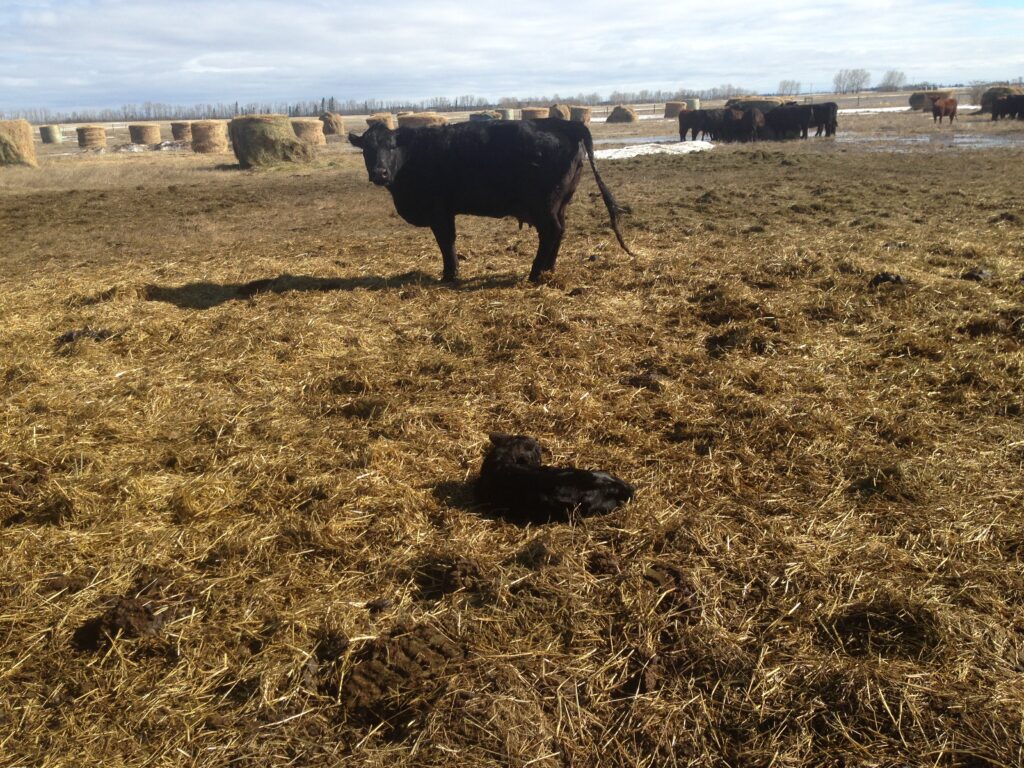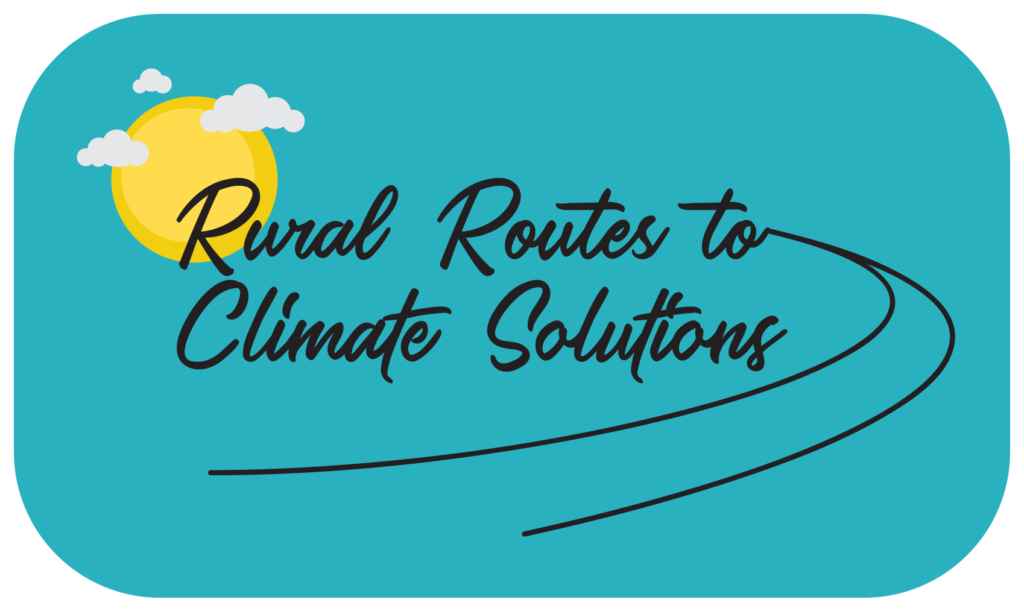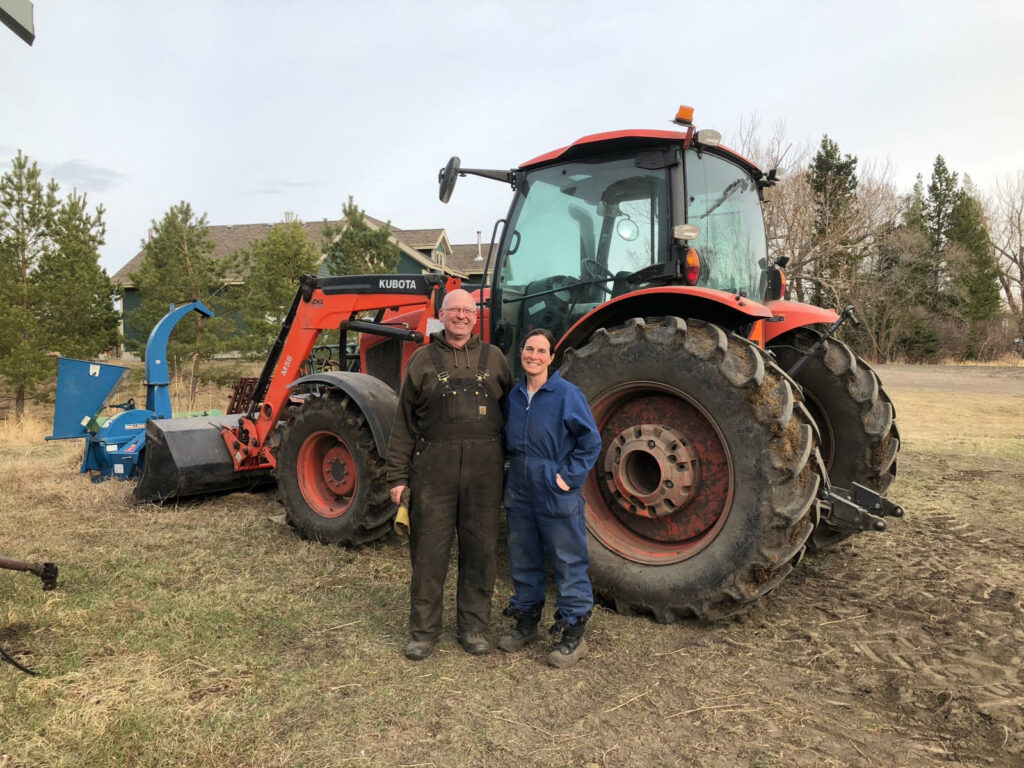 A devastating wind event in 2002 inspired Ward and Joanne Middleton to turn to regenerative agricultural methods of intercropping, silvopasture, and custom grazing cattle to import nutrients back onto the land
A devastating wind event in 2002 inspired Ward and Joanne Middleton to turn to regenerative agricultural methods of intercropping, silvopasture, and custom grazing cattle to import nutrients back onto the land
By Trina Moyles
For Ward and Joanne Middleton, organic grain and oilseed farmers, planning for environmental and financial resiliency has become critical to adapting to extreme weather events on the farm. Over the past 27-years, the couple has managed Midmore Farms, an 850-acre certified organic farming operation, located northwest of Edmonton in Sturgeon County.
Today, Ward and Joanne are practicing with a wide variety of climate solutions, including intercropping to reduce soil tillage and integrating livestock on the land through custom grazing. They’re also investing in renewable energy technology and participating in seed saving initiatives.
But these solutions haven’t happened overnight. Farming, says Ward, has been a dynamic, evolving process in observing interactions between soil, environment, climate, animal and plant vitality.
“We’re always striving for continuous improvement,” he says. “There’s always room for improvement.”
In 1994, Ward and Joanne were both 28-years old when they “took the plunge” and decided to buy the family farm from Ward’s father, who was retiring and selling off the shares to his children who wanted to farm. At the time, Ward was working as a millwright and power engineer at a pulp mill in Slave Lake. Joanne had graduated from the University of Alberta with a degree in family studies.
The couple purchased Midmore Farms and “never looked back,” says Ward. “Of course there are challenges, but on good days, we can see what we’ve accomplished together.”
Organic grain and oilseed production offered an economic opportunity to the young farmer, and as a result, Midmore Farms produced their first certified organic crop in 1998. But four years later, in 2002, a high wind event tore through Sturgeon County and destroyed a grain crop in one of Ward and Joanne’s sections containing soft, fertile soil with a high organic matter. Ward’s father had formerly kept the soil under cover as permanent pasture, but they’d decided to till and plant a crop.
“It was just like an event out of the Dirty 1930s,” Ward reflects. “The wind sheared the crop right off like you’d taken a blowtorch to it. It was shocking and sort of shame inducing because we thought we were doing so well — we had been determined to do better [as farmers].”
After the devastation of the high winds, Ward and Joanne decided they needed to farm differently to prevent erosion and nutrient loss. Ward began to practice intercropping two or more crops together within a crop rotation of oats, barley, wheat, winter wheat, rye, flax, canola, faba beans and peas, along with annual cereals, oils seeds and pulses. In addition, they began to practice relay cropping. He planted a winter annual, such as a winter wheat. Then, in the spring, they’d harrow the crop and blow on a biennial, sweet clover seed. These strategies resulted in less weeding and reduced tillage, along with longer crop rotations.
“I wish I had the foresight to understand that these practices were beneficial for a healthier microbial soil culture and fungal culture,” says Ward. “But that wasn’t necessarily the case. The regenerative agriculture movement hadn’t yet taken hold, so it was economics driving these choices. I didn’t realize why, but suddenly I had less weed pressure and a better utilization of nutrients.”
It wasn’t until 2019, years after he began experimenting with regenerative practices, when Ward took a course with Dr. Kris Nichols through the Food Water Wellness Foundation and came to understand that what he’d been doing on the farm for many years had tremendous benefits for soil health, as well as yielding financial benefits.
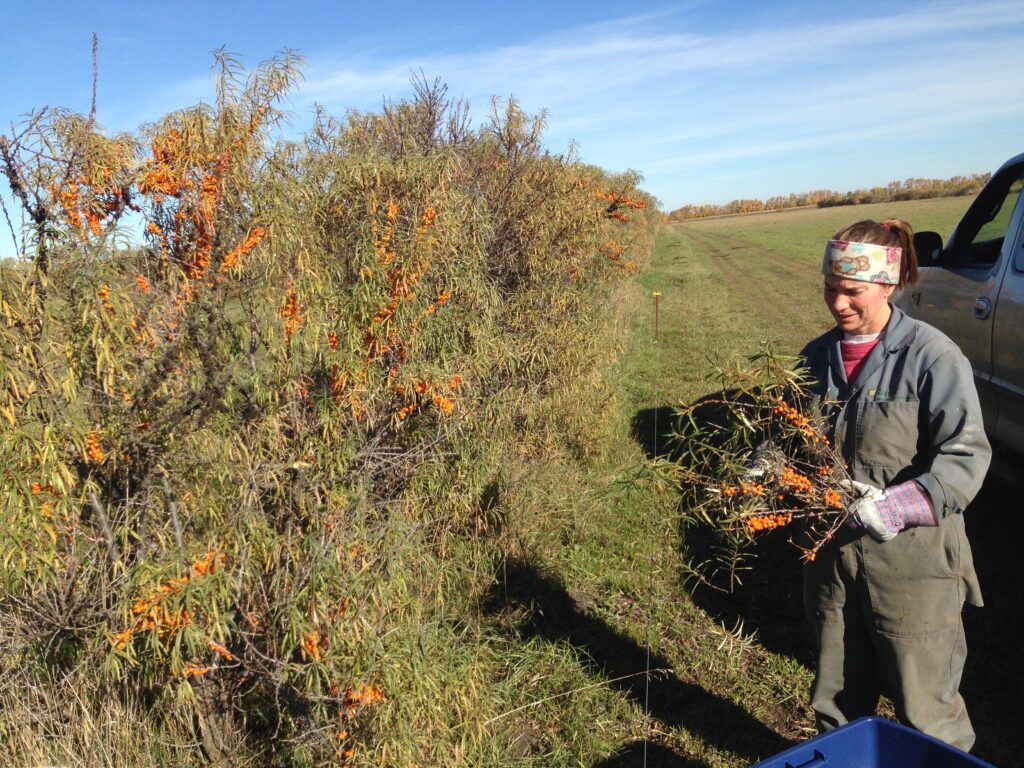 Establishing a Silvopasture System & Custom Grazing to Import Nutrients
Establishing a Silvopasture System & Custom Grazing to Import Nutrients
After the wind erosion event, Ward and Joanne decided to put the section of land with fragile soil back into a permanent pasture. In 2006, they began to establish a silvopasture system and aspired to work with another farmer to introduce livestock back onto the land through a custom grazing partnership.
“We planted sea buckthorn hedge rows on every 20 acre boundary and turned it into a rotational grazing pasture where we would custom graze cattle,” explains Ward. Sea buckthorn is a nitrogen fixing plant (shrub, or small tree) that grows well in marginal soils, and is also deer resistant because of its spines. The couple also put in a solar-fed pasture pipeline to bring water to the cows.
They began working with stockman Delton Jubinville, another local farmer who needed land to graze his growing herd of cattle. Ward and Joanne charge a yardage rate per cow per day.
The partnership has been win-win, says Ward, in that it’s enabled them to reintegrate livestock back onto the farm without actually having to own the cows and be responsible for husbandry tasks, including medicating and birthing. Because of the added-value of imported nutrients to the soil, they charge a lower yardage rate to the farmer.
Ward and Joanne originally just used the revenue from custom grazing to pay for a green manure crop that would be planted on one of the three arable quarters of land surrounding the custom grazing pasture. While that offered a diversified revenue stream, it became far more effective both financially and for soil health. In 2013, they decided to use the cattle to help terminate the green manure crop, which lengthened the grazing season. He’s stretched the grazing season even longer by using a chaff saver attachment on the combine to catch the chaff and drop it on the straw swath for late season swath grazing through the snow.
In 2017, the farmers agreed to keep the cattle over the winter, feeding them hay from the farm, along with hay brought in by Jubinville. “We consider that for every round bale of straw or hay that gets hauled in, there is at least $25 of nutrient benefit being imported onto the land,” explains Ward. The cows convert the hay into an organic compliant nutrient.
The custom grazing partnership has provided environmental and financial resiliency to Midmore Farms, particularly in the face of extreme weather events, including the heavy rains and flooding that occurred in 2020. He recalls how 60 percent of the pasture flooded and the calves were up to their knees while grazing.
“If we had tried to grain farm that quarter section it would’ve been a complete wreck,” says Ward. “The custom grazing has given us financial resiliency, but it’s also allowed us to use the cattle to build soil health and do less tilling.”
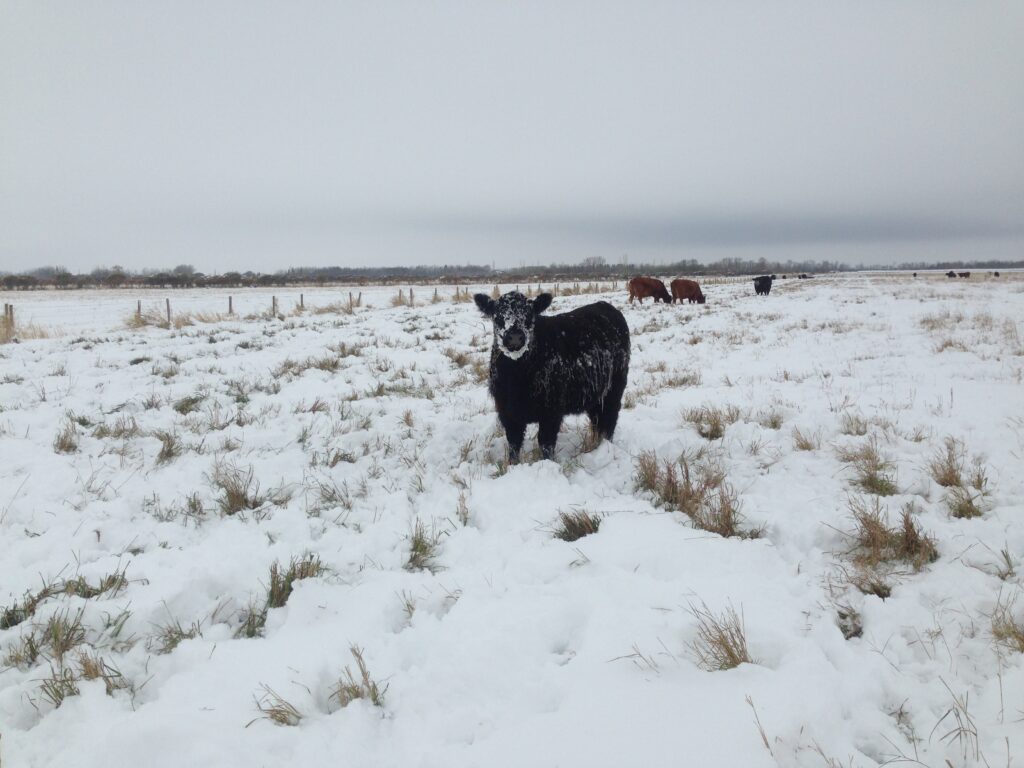 Striving for No-Till for Improved Soil Health — Alfalfa and Rotational Grazing
Striving for No-Till for Improved Soil Health — Alfalfa and Rotational Grazing
Ward and Joanne are currently experimenting with 110 acres of an alfalfa hay field that they plan to plant with an annual crop next spring. Alfalfa, a nitrogen fixing plant, is an ideal way to clean up weeds from the cropland, explains Ward. “It outcompetes Canada thistle and its roots reach down 8 metres into the clay bed to bring up nutrients into the growing zone.”
Initially, he’d planned to plough the crop under to terminate the alfalfa, but recently, Dr. Kris Nichols challenged him: is there a way he could use the livestock to terminate the alfalfa?
After they cattle finish their second rotation on the custom grazing pasture, Ward and Joanne will move the cows onto the alfalfa to graze and help to terminate the crop. “All I’m losing for nutrient export is the weight gain of the cow,” explains Ward. “Most of which will be nitrogen that the legume has fixed from the atmosphere. Nitrogen is one of the key building blocks of the protein molecule, which leads to the weight gain of the cow.”
Again, the custom grazing partnership provides a win-win situation for both farmers. Ward hopes that the experiment results in that he won’t need to till, or till as extensively, come the spring. With hay prices at a record high, this also extends the grazing season by a month which will help keep costs down for the cattle owner. He says they’ll be closely monitoring the cattle to ensure they don’t bloat from the rich feed.
Come spring, they’ll direct seed wheat into the land. Ward admits it’s not going to be a perfect science and there’s likely to be a strong presence of volunteer alfalfa. But he doesn’t mind, pointing out that organic farming values polyculture and biodiversity over a pure monoculture. “Yes, we might get a little bit less yield if there’s a lot of volunteer alfalfa still in it,” says Ward. “But it’s just that much better fodder for the cattle in the fall, and we still manage to get a crop off.”
Overall, Ward and Joanne are excited by the opportunities created by the custom grazing operation. “The whole relationship with having this herd of herd of cattle on the land is what gives us options that we didn’t have before,” says Ward. “It’s been educational and allows many innovations.”
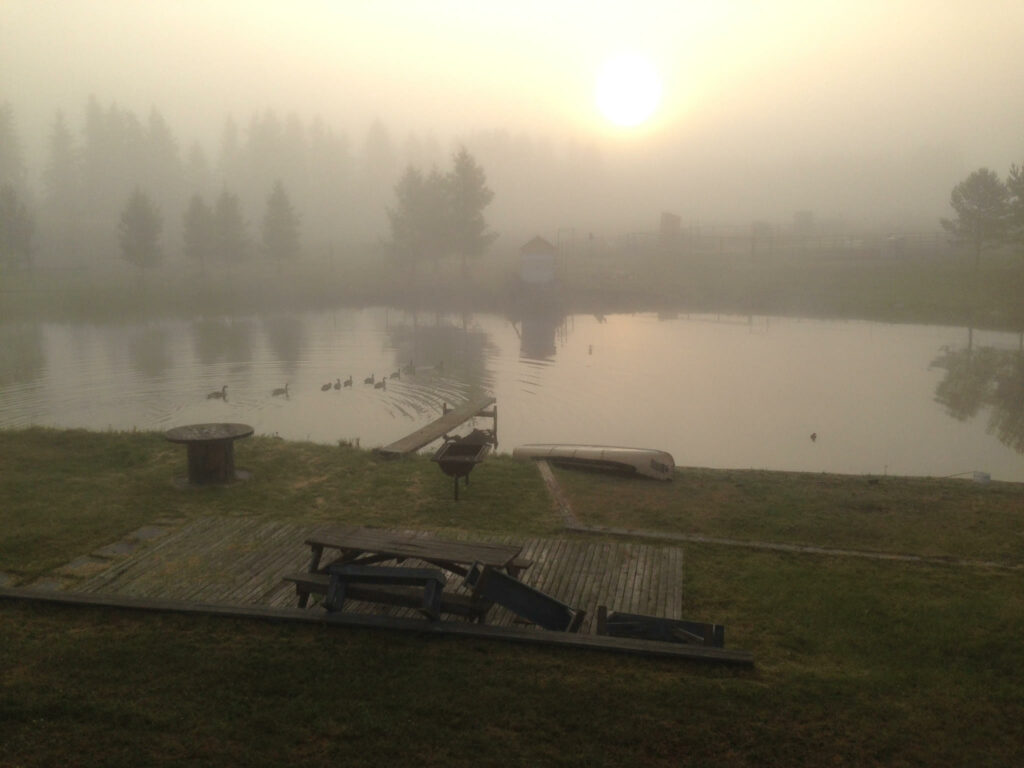 Planning for water, renewable energy and seed security
Planning for water, renewable energy and seed security
Ward and Joanne are working hard to equip their farm to become more resilient in the face of extreme weather events, including droughts and flooding.
They’ve upgraded to using a tractor that meets the diesel exhaust fluid requirements to control nitrous oxide emissions. In addition, they use geothermal heating technology on the farm. While good for the environment, Ward admits that geothermal has been economically challenging given energy pricing in Alberta. Recently, they installed a new solar array, and as well, they rely on solar for their pasture pipeline to provide water for 140 of the custom grazing cows.
Water is a huge priority for them, says Ward, particularly after the summer heat dome event that impacted many Albertan farmers. He points out that their two dugouts on the solar pasture pipeline system are currently down to 20 percent of their water level. As a result, they’re expanding the number of water catchments, dugouts, and ponds on the farm, to capture and store from large rain events. “If we just have more dugouts on our farm, it makes the farm more resilient to endure through drought events.”
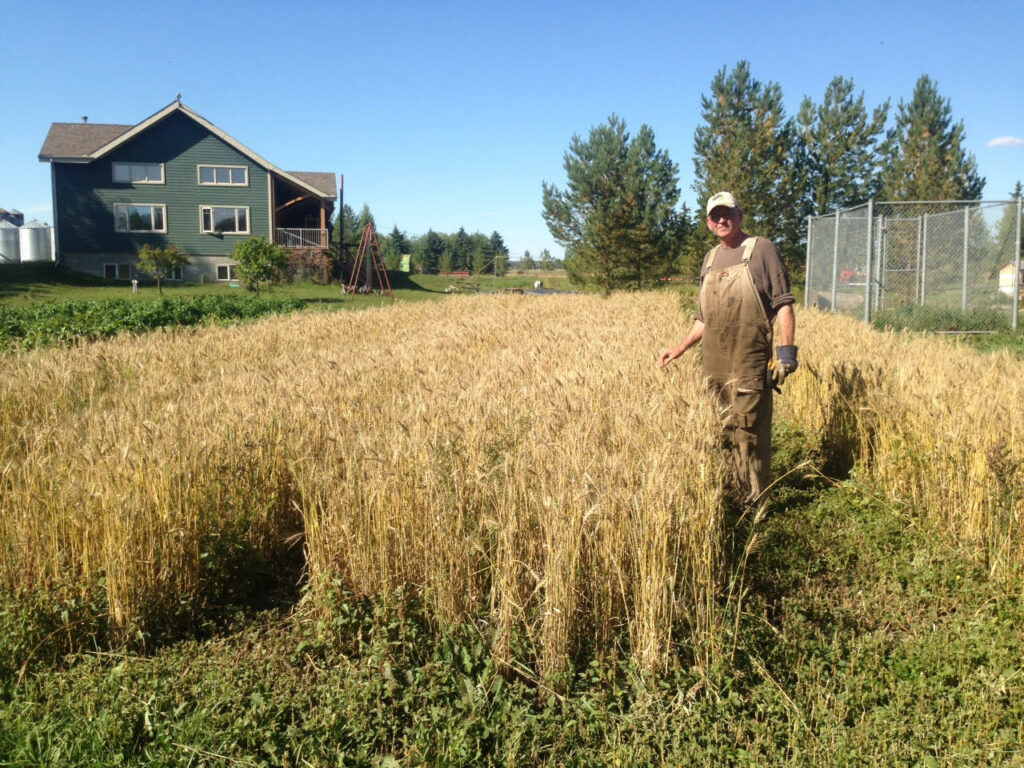 In recent years, Ward participated in the Bauta Family Initiative on Canadian Seed Security, a program hosted by Organic Alberta that brings together farmers and researchers to build the resiliency and security of Canada’s seed supply. Seed biodiversity is being lost at an alarming rate in Canada, due to the concentration and control of the corporate seed industry. The majority of seeds are bred to perform under specific conditions, explains Ward, which makes them vulnerable in their ability adapt to different growing conditions and extreme weather events.
In recent years, Ward participated in the Bauta Family Initiative on Canadian Seed Security, a program hosted by Organic Alberta that brings together farmers and researchers to build the resiliency and security of Canada’s seed supply. Seed biodiversity is being lost at an alarming rate in Canada, due to the concentration and control of the corporate seed industry. The majority of seeds are bred to perform under specific conditions, explains Ward, which makes them vulnerable in their ability adapt to different growing conditions and extreme weather events.
Ward volunteered to work with researchers from the University of Alberta and the University of Manitoba to grow genetic crosses of hard red spring wheat. The goal was to cross species to develop new varieties of genetically variable crops. Ward was responsible for making selections and sending the sample seed back to researchers.
Recently, he learned from Dr. Martin Entz that one of the wheat variety he did selections on was outperforming conventional varieties by 15 percent.
Due to current regulations, Ward can’t sell a non-registered wheat variety back into the bulk food system, but it is legal to direct market their grain to customers to mill it, or sprout it for wheat grass seed. As a result, in recent years, Midmore Farms has evolved to sell their grain locally. For example, they partner with a bakery in Edmonton that mills their hard red winter wheat. “Last year, 50 percent of our gross revenue for the farm came from direct sales that didn’t include a grain company or a grain broker,” explains Ward.
Researchers from the seed security initiative sent sample bags of the genetically diverse crop from the trial plots, and Ward planted the seed in his garden. He plans to propagate the variety and commercialize it through small-scale direct sales to customers.
“It’s really cool because it’s a variety that we did the selections to develop here on our farm,” says Ward. “And to me, it’s one of the things that might possible be a solution to make us more resilient in the face of climate change: as this variety has wider genetic diversity, it will be less likely to fail in the face of extreme growing conditions.”
—

MIDMORE FARMS - STURGEON COUNTY, TREATY 6
Ward and Joanne Middleton manage Midmore Farms, a family-run organic grain and oilseed farm located in Sturgeon County, Alberta. Ward and Joanne bought the family farm in 1994 and have been certified organic since 1998. They practice rotational grazing through a custom grazing partnership, and produce oats, barley, wheat, winter wheat, rye, flax, canola, faba beans and peas, along with annual cereals, oils seeds and pulses. Ward is also participating in organic seed saving initiatives to grow more genetically variable wheat crops.
Learn more about Midmore Farms –

